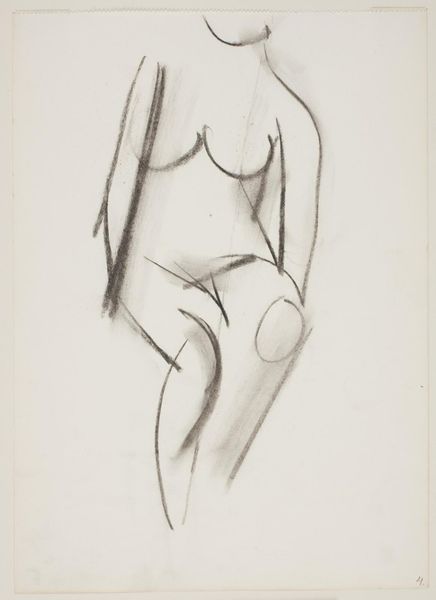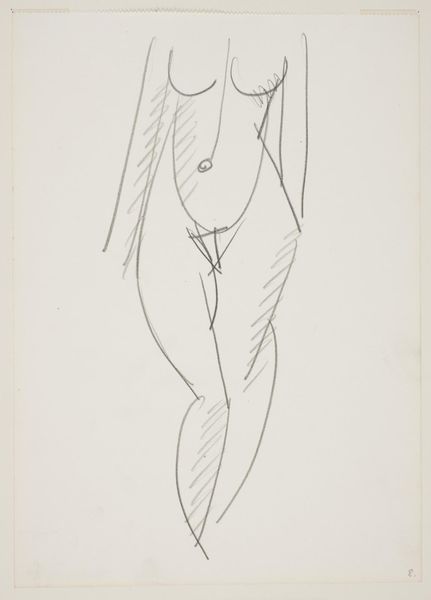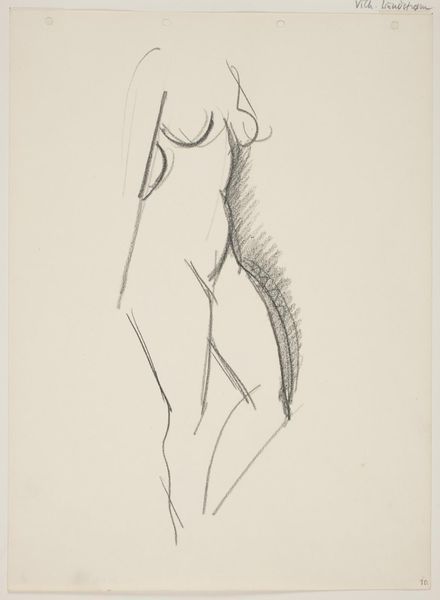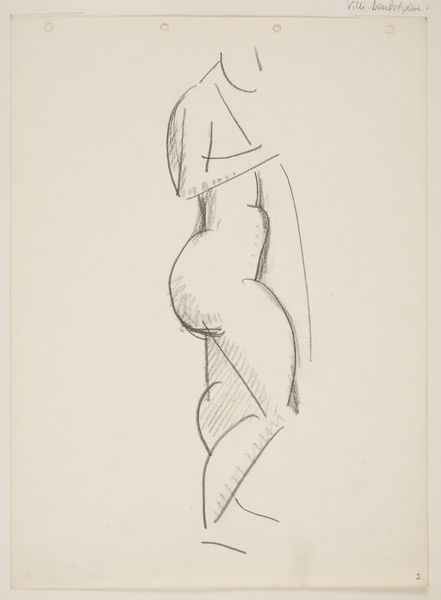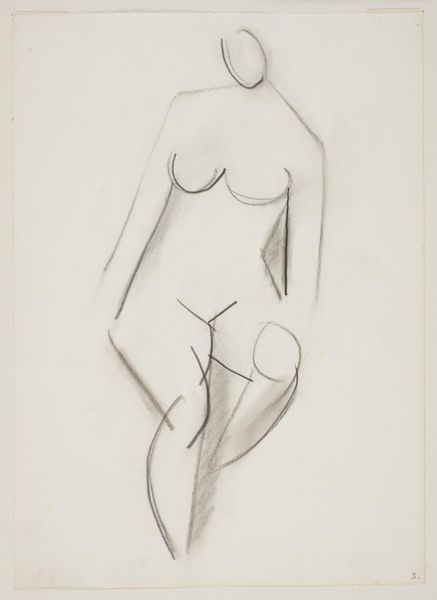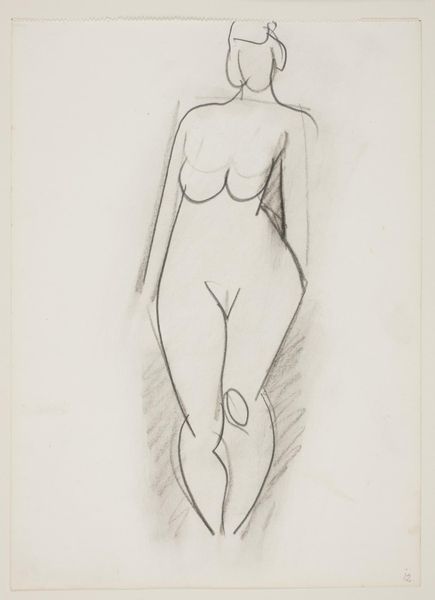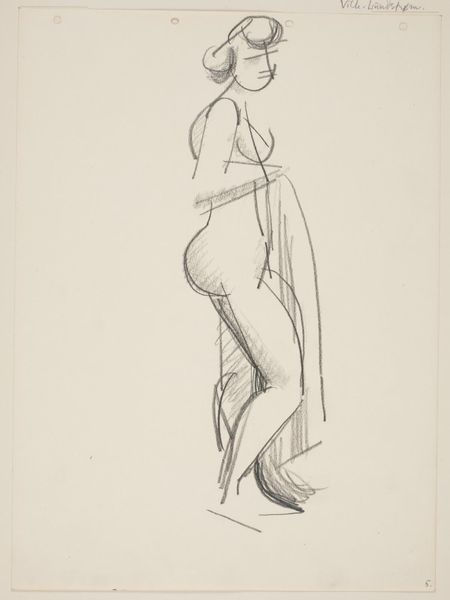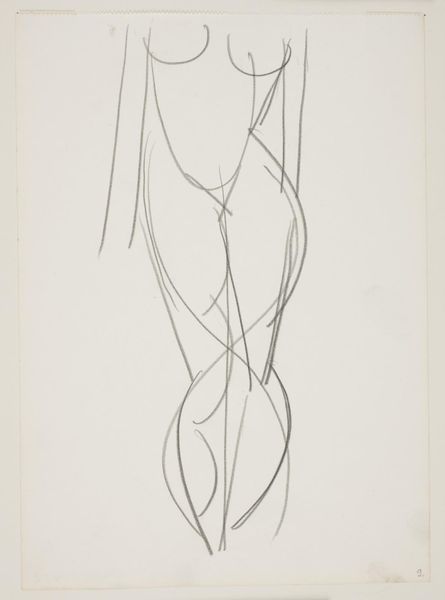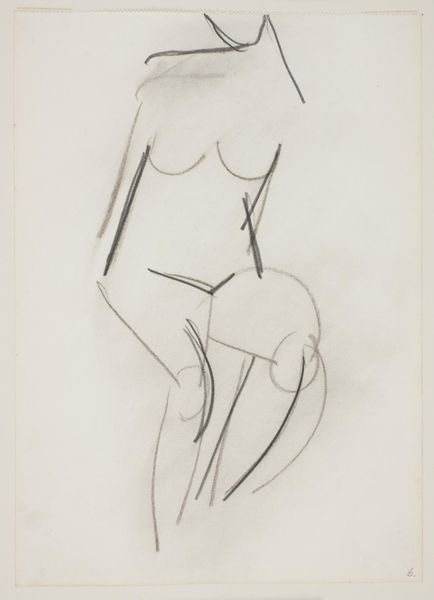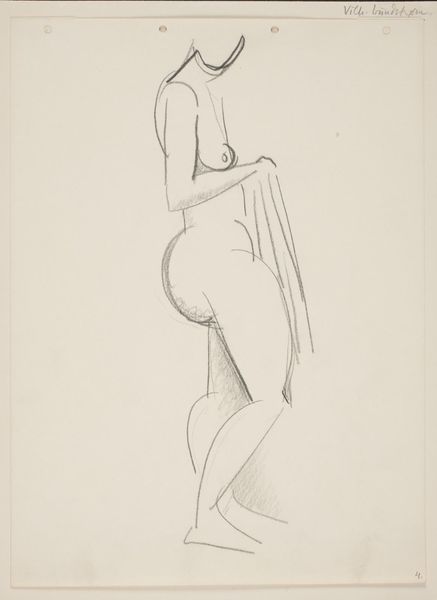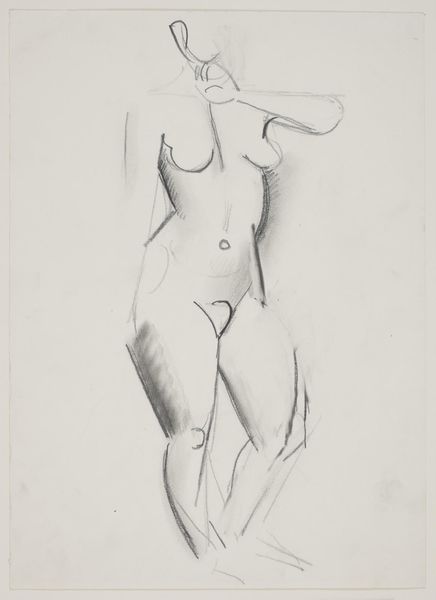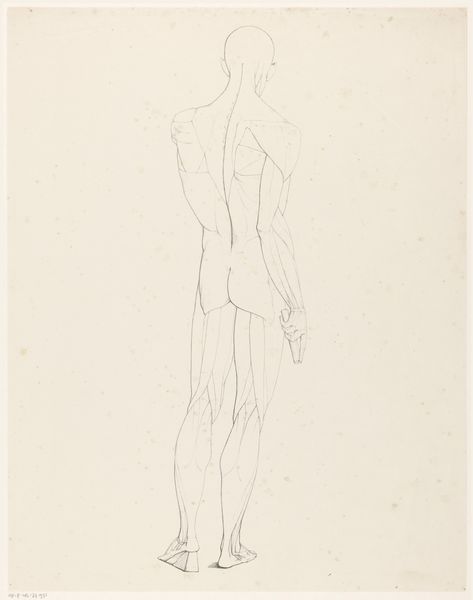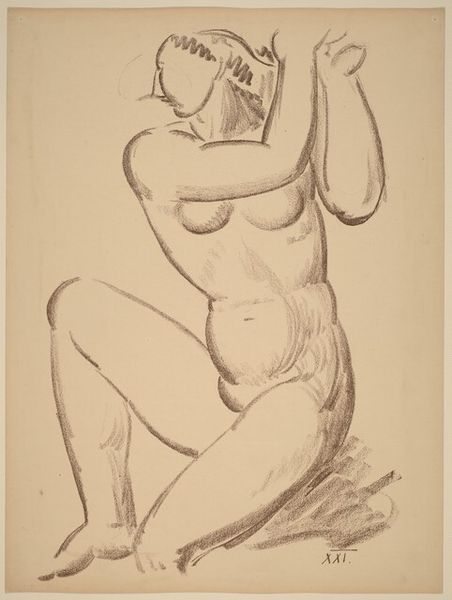
drawing, dry-media, pencil
#
portrait
#
pencil drawn
#
drawing
#
pencil sketch
#
figuration
#
dry-media
#
pencil drawing
#
pencil
#
abstraction
#
portrait drawing
#
modernism
Dimensions: 255 mm (height) x 181 mm (width) (bladmaal)
Editor: This is "Standing Nude Woman Seen From The Front," a pencil drawing by Vilhelm Lundstrom, created between 1945 and 1948. It’s deceptively simple; just a few lines, but they create a really powerful sense of form. What symbolic reading would you give this seemingly minimal image? Curator: The apparent simplicity is exactly where its power lies. These spare lines, rendered in the aftermath of war, possess an almost primal quality. They speak to a reduction to essentials, a stripping away of ornamentation to reveal the underlying form, perhaps a collective cultural impulse after so much destruction. What resonates with me is the almost totemic nature of this figure; the standing nude, divorced from overt eroticism, becomes a symbol of resilience and re-emergence. Do you see any familiar archetypes in the lines themselves? Editor: I see hints of a classical contrapposto stance, even within the abstraction. Does that nod to classical forms also play into your idea of resilience, like a connection to an established visual language? Curator: Precisely! Think about how artists often revisit and reimagine classical motifs during times of societal upheaval. The figure is not just a body; it's an echo. It holds the cultural memory of form while simultaneously being resolutely modern. Consider, too, the use of pencil—a seemingly humble medium, yet capable of rendering both delicacy and strength. What emotions does the rawness of the pencil evoke in you? Editor: A sense of immediacy, of the artist capturing something essential and fleeting, but with a conscious nod to enduring forms, it becomes really thought-provoking. I see now how the simplicity acts like a kind of concentrated meaning, rather than an absence. Curator: Yes, Lundstrom creates a dialogue between epochs and emotions within what appears at first glance as only sparse lines. It truly rewards a second look, doesn't it?
Comments
No comments
Be the first to comment and join the conversation on the ultimate creative platform.
